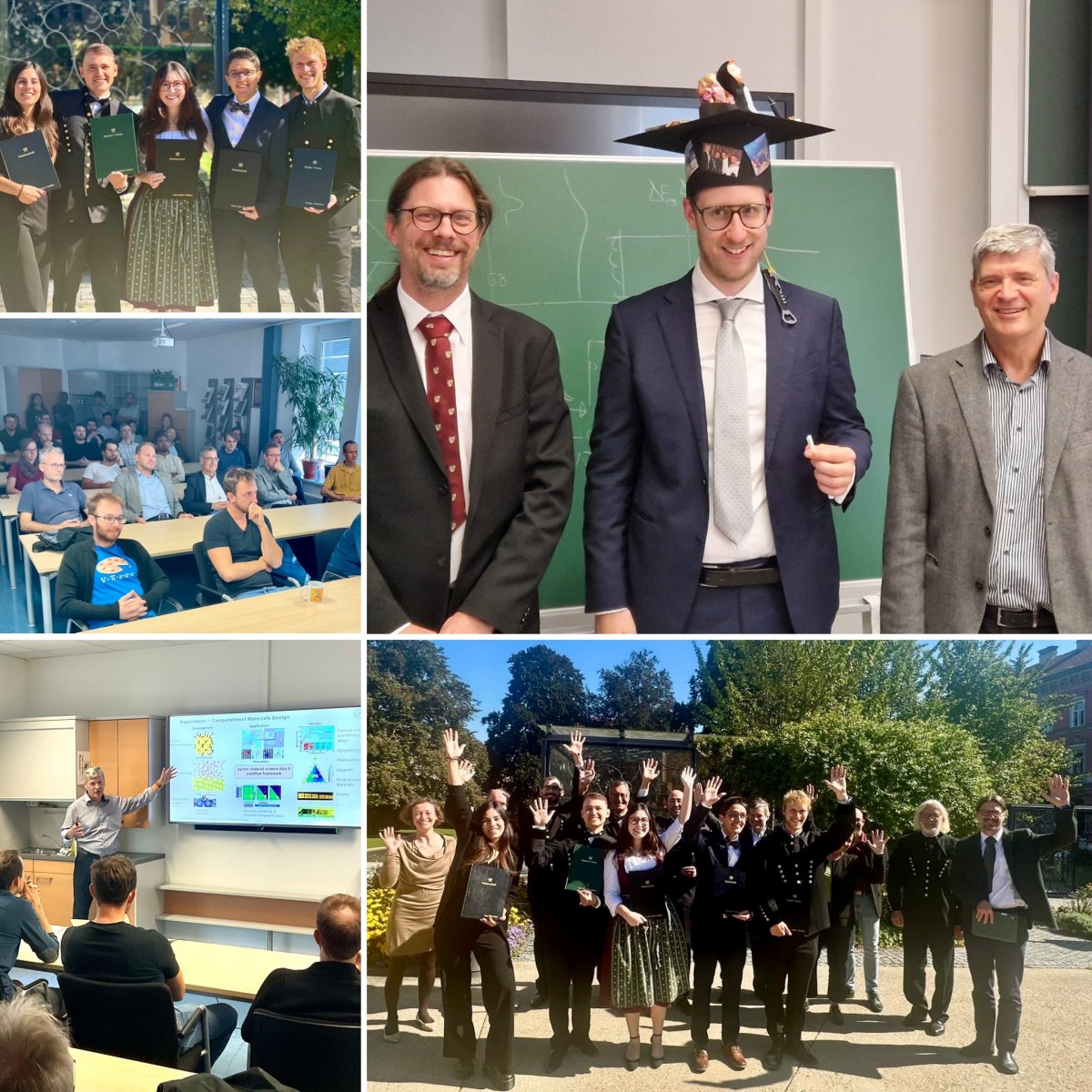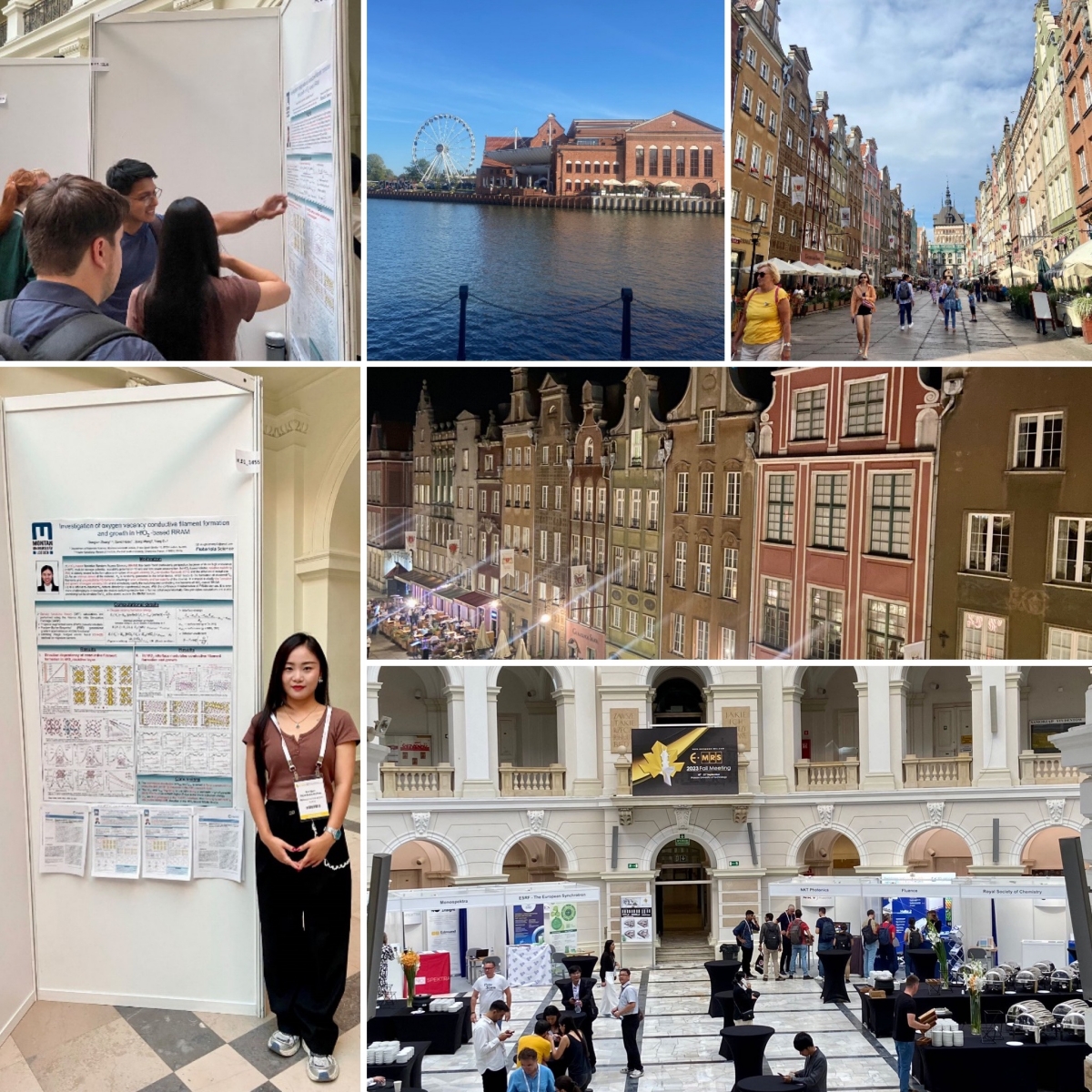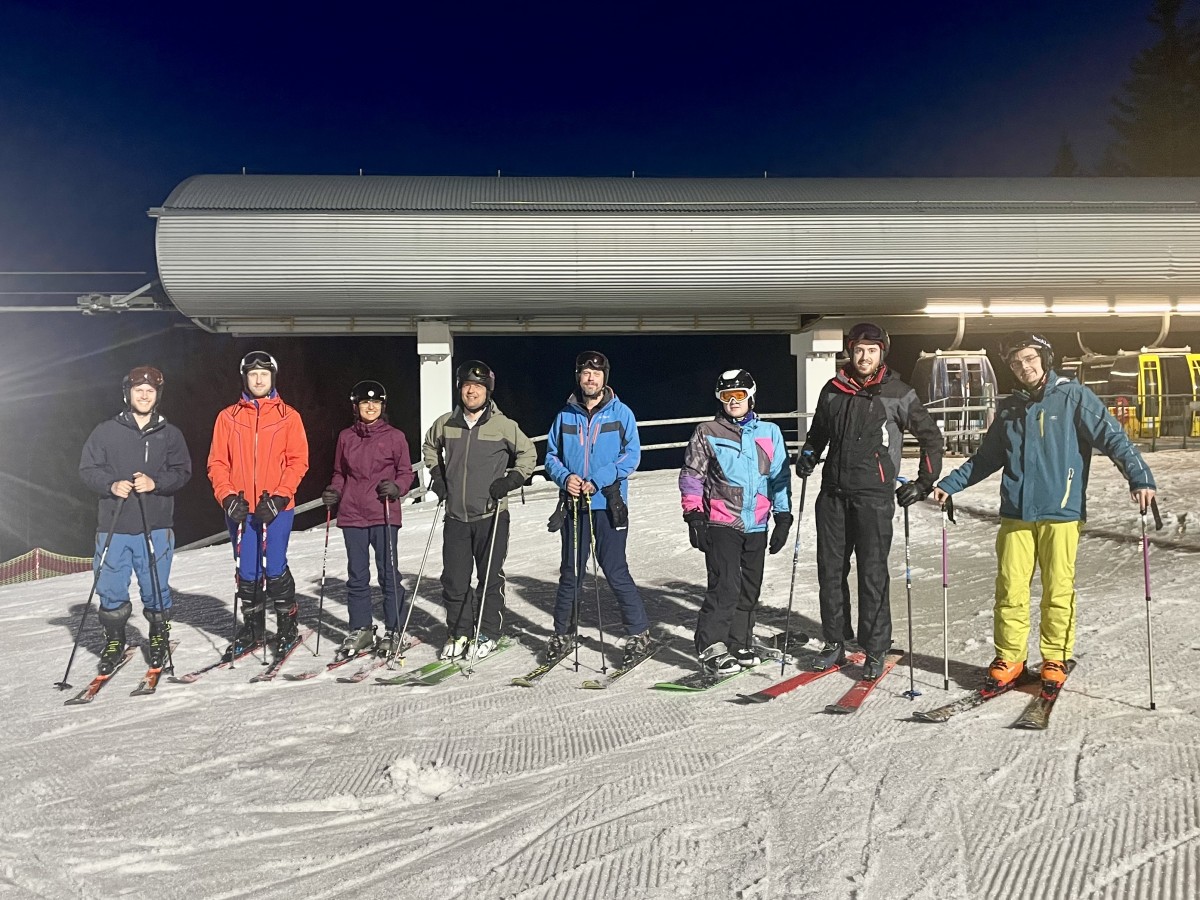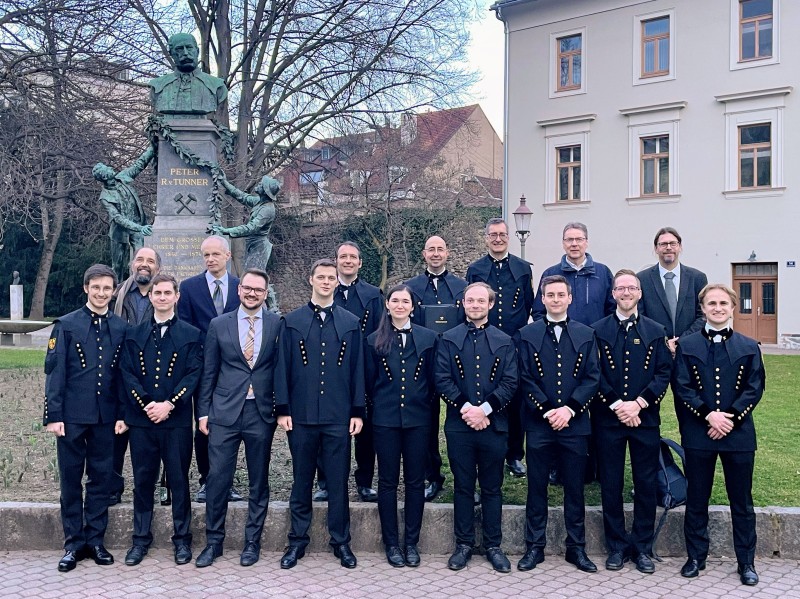
This work presents beautiful microscopy work on tungsten suboxide W18O49 nanowhiskers. The focus was laid on the impact of irradiation on the growth and structure of the nanowhiskers. While large parts are composed of well-documented pentagonal Magnéli columns and hexagonal channels characteristic for this phase, highly crystalline and oriented domain structures of previously unreported mixed structural arrangements were also identified. Our DFT calculations of EELS spectra for different local motifs corroborated these experiments.
Vojtěch Kundrát and Reshef Tenne from the Weizmann Institute of Science, Israel initiated and coordinated this collaboration.
V. Kundrat, K. Bukvisova, L. Novak, L. Prucha, L. Houben, J. Zalesak, A. Vukusic, D. Holec, R. Tenne, J. Pinkas: "W18O49 Nanowhiskers Decorating SiO2 Nanofibers: Lessons from In Situ SEM/TEM Growth to Large Scale Synthesis and Fundamental Structural Understanding". Cryst. Growth Des., (2023). DOI: 10.1021/acs.cgd.3c01094
Antonion has successfully defended his MSc thesis titled “Influence of vacancies on the N K-edge ELNES response of fcc Tantalum nitrides–Ab initio study“ and passed the final exams to get the MSc degree in Materials Science.
Congratulations!
Today, Ganesh Nayak Kumar has successfully defended his PhD thesis “A Multi-method Atomistic Study of Protective Nitride Coatings: from Crystalline to Amorphous Materials“and thereby finally “legalized“ his postdoc in Aachen. The thesis was reviewed by Prof. Paul Mayrhofer (TU Wien) and Assoc. Prof. Davide Sangiovanni (Linköping University, Sweden). Davide also acted as the second examiner.
Many congratulations to Ganesh and all the best for the future!

Clement Paulson attended the Ab initio Description of Iron and Steel (ADIS2023) meeting focusing on “Digitalization and Workflows“. This workshop was organized by MPIE at the Ringberg castle. Clemeb\nt presented a posted on his work on “Physics-informed neural network for predicting Gibbs free energy“.
Last week, David gave an invited talk at the Intermetallics Conference 2023 in a beautiful monastery, Kloster Banz. The meeting brought together friends from computational and experimental fields, sharing their passion for intermetallic alloys. Apart from great talks and engaging scientific discussions, we could enjoy the excursion to Kulmbach and jogging in the nearby forests.

What a busy week!
On Tuesday, Keegan Zetterberg finished his MSc studies of Materials Science within the international study program AMASE. His thesis was titled “The effects of grain size on the elastic response of FeCrMnNiCo high entropy alloy: a molecular dynamics study“.
The end of the week was marked with the visit of Prof. Jörg Neugebauer, Director of the Max Planck Institut für Eisenforschung in Düsseldorf. Two days were filled with intense discussions, exchange of ideas, planning of future collaborations. Jörg also gave a seminar lecture on “Metastable defect phase diagrams as a road map for defect design“.
But the major reason for Jörg's visit was purely academic: he acted as a reviewer of Dominik Gehringer’s thesis “Atomistic approaches for investigating planar defects in compositionally complex alloys“ and also as his examiner. On Thursday, Dominik successfully defended his PhD thesis and passed the final exam with distinction!
Many Congratulations to both Keegan and Dominik!

Donglan Zhang, an exchange PhD student in the Computational Materials Science group at the Department of Materials Science, attended the 2023 Fall Meeting of the European Materials Research Society (E-MRS) held September 18-21 2023 at the University of Technology in Warsaw, Poland. Donglan presented a poster on “Oxygen vacancy conductive filament formation and growth in HfO2-based RRAM”. It was a unique and interesting experience to meet with many excellent researchers, to discuss with them face-to-face Donglan’s results, to enjoy their sharing of interesting research, and to experience the culture and beauty of the cities of Warsaw and Gdańsk!

Diborides of transition metals have a hexagonal structure composed of alternating layers of boron and metal atoms. They appear in various stackings of the metal planes and, related to that, with different puckering levels of the boron planes. In this paper, we present a theoretical work on the barriers to transformations between these allotropes and put them into the perspective of chemical and electronic trends.
This work is a collaboration with Nikola Koutná and Paul H. Mayrhofer (TU Wien) and Martin Zelený and Jozef Janovec (Brno University of Technology).
T. Leiner, N. Koutná, J. Janovec, M. Zelený, P.H. Mayrhofer, D. Holec: "On energetics of allotrope transformations in transition-metal diborides via plane-by-plane shearing". Vacuum, 215, 112329 (2023). DOI: 10.1016/j.vacuum.2023.112329
Dominik has organized an internal one-day workshop on compiling codes and linking with libraries, a skill needed for every computational materials scientist.

Ever wondered how to get the best of the two worlds, quantum mechanical DFT, and molecular mechanics? Then check out the latest publication of Dominik Gehringer on implementing the QM/MM approach for phase boundary segregation in multi-phase multi-component TiAl intermetallic system!
This work is a collaboration with Liam Huber and Jörg Neugebauer from MPIE Düsseldorf.
D. Gehringer, L. Huber, J. Neugebauer, D. Holec: "Segregation to α2/γ interfaces in TiAl alloys: A multiscale QM/MM study". Phys. Rev. Mater., 7(6), 063604 (2023). DOI: 10.1103/PhysRevMaterials.7.063604
Last week, David gave an invited talk the 7th International Workshop of Titanium Aluminides (IWTA2023) in Toulouse. It was great to spent time with my current and former colleagues from Montanunversität Leoben, to reconnect with the TiAl family, to learn from the great talks, to visit Airbus assembly lines, and to enjoy french wine and hospitality.

Diffusion governs many important processes in materials. In this publication, Ganesh Kumar Nayak used DFT to study migration barriers for vacancy-mediated diffusion of transition metal impurities in TiN, a prototype hard coating. We show that the diffusion properties are not fully (anti-)correlated with the atom size, but the impurity bonding in both the initial and transition state plays an important role.
The work is a collaboration with Martin Zelený (Brno University of Technology).
G. Nayak, D. Holec, M. Zelený: "Impact of d-states on transition metal impurity diffusion in TiN". Sci. Rep., 13(1), 8244 (2023). DOI: 10.1038/s41598-023-34768-7
Compositionally complex alloys are fascinating and challenging at the same time. Ganesh performed a series of DFT calculations to prove that sluggish diffusion is not necessary a consequence of compositional complexity (and hence of high configurational entropy), and proposed a species-resolved quantification of local distortions which seems to correlate with (species resolved activation energies).
The work is a collaboration with Andreas Kretschmer and Paul Mayrhofer (TU Wien).
G. Nayak, A. Kretschmer, P.H. Mayrhofer, D. Holec: "On correlations between local chemistry, distortions and kinetics in high entropy nitrides: An ab initio study". Acta Mater., 255, 118951 (2023). DOI: 10.1016/j.actamat.2023.118951
In our recent publication, we applied DFT calculations to analyze the thermodynamics of the decomposition of TiAl-based high entropy alloys. In agreement with the experiment, we showed that TiAlNbV+Mn is unstable as a single-phase solid solution. We predicted that also the Mo variant should decompose. Since the experiments indicate that this phase remains stable, we concluded that TiAlNbV+Mo high entropy alloy is kinetically stabilized.
L. Hatzenbichler, S. Zeisl, H. Clemens, D. Holec: "Phase stability of TiAl-based BCC high entropy alloys". Intermetallics, 158, 107893 (2023). DOI: 10.1016/j.intermet.2023.107893
To mark the definitive end of the Corona times, we have renewed the tradition of the skiing day. With almost the last chance (for snow and skiing) we enjoyed the afterwork team-building at Semmering.

Anna and Lukas have successfully defended their MSc theses and passed the final exams. Anna's thesis was titled “Ab initio discovery of novel hydride phases in NiTi shape memory alloys“, Ulrich's “Deriving a Model for Catalytic Methane Pyrolysis: A DFT Study“. They have earned an MSc degree in Materials Science.
Congratulations!

We present a Python package for the efficient generation of special quasi-random structures (SQS) for atomic-scale calculations of disordered systems. Both, a Monte-Carlo approach or a systematic enumeration of structures can be used to carry out optimizations to ensure the best optimal configuration is found for given cell size and composition. Both SQS optimizations and analysis of structures can be carried out via a command-line interface or a Python API. Additional features, such as optimization towards partial ordering or independent sublattices allow the generation of atomistic models of modern complex materials. The output data format is compatible with ase, pymatgen and pyiron packages to be easily embeddable in complex simulation workflows.
More info about the package here.
D. Gehringer, M. Friák, D. Holec: "Models of configurationally-complex alloys made simple". Comput. Phys. Commun., 286, 108664 (2023). DOI: 10.1016/j.cpc.2023.108664